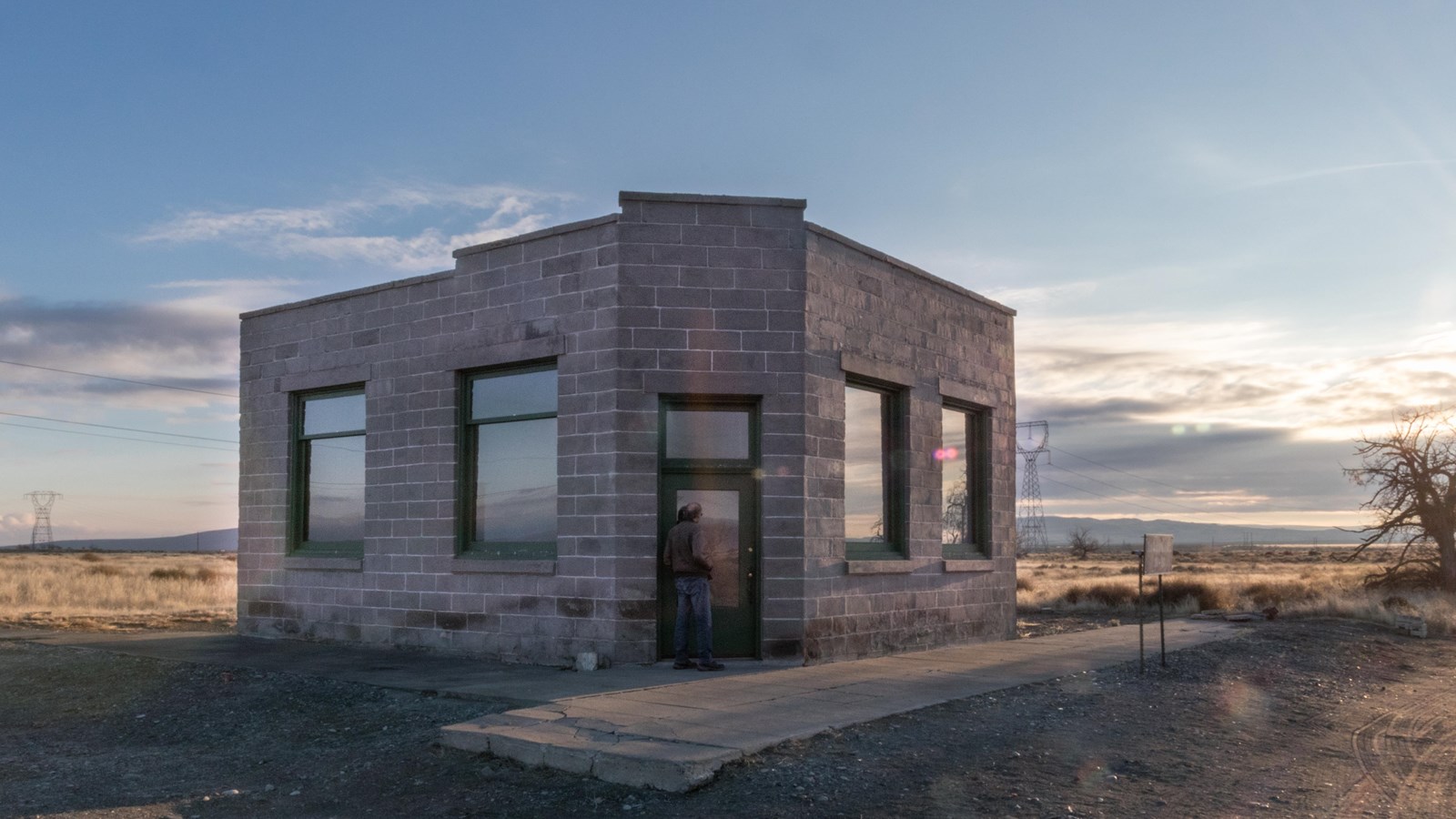Last updated: January 17, 2023
Place
White Bluffs Bank

NPS/BURGHART
Historical/Interpretive Information/Exhibits
At the height of the Great Depression, Leatris Reid’s mother had just lost her job and her newborn child. She desperately sought a new home with steady employment opportunities. She wrote letters to community leaders across Washington state inquiring about their towns. She received the most persuasive replies from White Bluffs. The bank operator sent her "glowing letters about the fruit" grown in the area and emphasized the excellent local job opportunities. Convinced that she could find a better quality of life in White Bluffs, she moved her family to this small, isolated farming town.
Moving to find a better life was a common experience in White Bluffs. In the first twenty years of Euro-American settlement, the town of White Bluffs itself moved three times. The first two locations were too close to the Columbia River. Homes and fields were flooded, hampering the new settlers’ dreams of agricultural prosperity. When a major railroad was built through the area, White Bluffs’ town center moved once again to take advantage of easier agricultural shipping and greater commercial opportunities that the railroad offered. White Bluffs residents made sacrifices and chased opportunities in order to realize their ambitions. They established a thriving community along the Columbia River for decades, until the arrival of the Manhattan Project in 1943.
White Bluffs Bank, built around 1908, is the only surviving building from the small community. When built, The First National Bank of White Bluffs boasted of its massive and secure vault, but the building nonetheless suffered two robberies during its approximately 30 years of operation. This building once stood in the community center. Nearby, Fred Gilhauly operated a Ford dealership and the town’s small service station, and Pop English owned a drugstore.
Former White Bluffs residents fondly remembered that Pop "made the best ice cream in the world.” Pop also directed the White Bluffs High School band. These residents recalled that, in the springtime, young women wearing “little ballerina type dresses" gathered at the city park to perform choreographed dances "around this maypole." At summer events such as boat races "Mr. Killian used to slice his big watermelons and sell them" while the community band played.
One resident remembered Fourth of July celebrations where “picnic tables [were] set out underneath the trees, and a lot of people being there. Everybody ha[d] a good time. In the summer, traveling carnivals occasionally set up temporary operations on the riverside area where Native Americans came to catch and smoke salmon in the fall.”
In 1943, the Manhattan Project used eminent domain to seize the town of White Bluffs and ordered its people to leave their homes. White Bluffs moved once again, this time not as a community but as individuals. Dick Wiehl, who grew up in White Bluffs, reflected on this process and what was lost, “A town should, once started, should live out its natural life. And this did not happen with White Bluffs. Its natural life was truncated suddenly by Presidential decree.”
The Department of Energy offers Pre-War Historic Sites Tours that explore the communities of Hanford and White Bluffs, which were displaced by the Manhattan Project. At the Allard Pumphouse, you can see remnants of the massive irrigation works that made farming possible in the arid Mid-Columbia region. Surviving buildings at the Bruggemann Ranch demonstrate the prosperity that large farmers attained before the Manhattan Project. At the Hanford High School, you can see a major community institution that was repurposed as office space for the Manhattan Project. The Department of Energy also offers tours of the B Reactor, the world’s first full-scale nuclear reactor.
If you are unable to attend one of these tours you, can see the former White Bluffs community from the White Bluffs Overlook, and the Hanford High School Overlook from the White Bluffs trail on the Hanford Reach National Monument.
